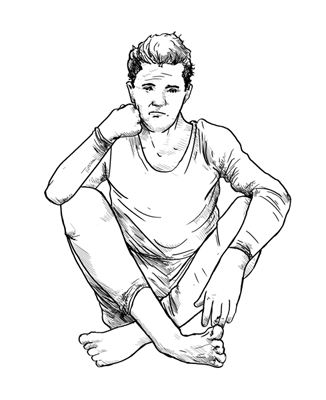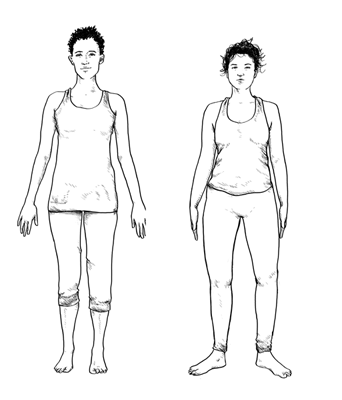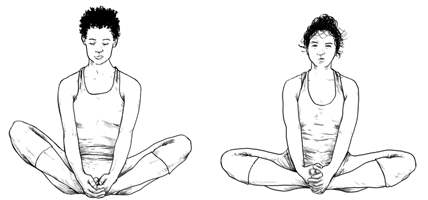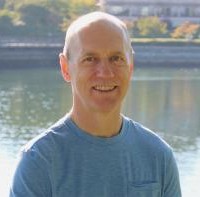You are unique! These three words imply something amazing. In the whole universe, there is no one like you. You are not “average” and you are not “normal”—no one is actually average, normal or regular. You may share a few similar traits with other people: you may wear a medium-sized shirt like millions of others; your shoe size may be the same as your sibling’s; you are made up of identically shaped protons, neutrons and electrons, as is everyone you know. But when you examine the whole of who you are, the ways these particular parts come together to form a “you,” you are totally and indisputably unique.

Consider what this means: if you are totally unique, then what you need to be healthy and whole will be very different from what someone else needs. Roger Williams, scientist, author and discoverer of vitamin B5, coined the term “biochemical individuality” to express how vastly different all humans are from each other.[1] It is this variation that makes all the difference when we look at what keeps us healthy and what causes us to become sick and suffer disease. The nature of human variation has been largely ignored in both medicine and the fitness world (including the yoga industry), an error that Williams and others have tried to correct. The 18th-century physicians Parry of Bath said, “[It is] more important to know what sort of patient has a disease, than to know what sort of disease has a patient.”[2] We can paraphrase this in relation to yoga as:
“It is more important to know what sort of student can do a pose, than to know what sort of pose is doing the student.”
In advising how to train an elite athlete, Stuart McGill, a medical researcher of lower back disorders, notes, “Each person has different proportions of body segment lengths, muscle insertion lengths, muscle to tendon length ratios, nerve conductance velocities, intrinsic tissue tolerances, etc…. Imposing a stereotyped “ideal” technique will often prevent an athlete from reaching their full potential.”[3] Figures 1 and 2 give simple illustrations of how our uniqueness will affect our yoga postures.

Just as no one else has your dental pattern, no one else has your bone structure, your spine or your hips. Why think, then, that what someone else can do, you should be able to do, too? Or why think that because someone else can’t do something, you also will fail? There are things you can do right now, there are things that you will be able to do in time, and there are things that you will never be able to do. This is not a critique of your abilities or a reflection of your personality or some flaw that needs to be fixed—this is simply the reality of your existence. A five-foot-tall ballerina will never play right tackle for the Seattle Seahawks, and the right tackle for the Seahawks will never win an Olympic gold medal for figure skating. This does not mean that the ballerina is flawed or the right tackle is lazy. A snowflake, in all its beautiful uniqueness, will never be a galaxy of stars. Why would it ever try to be something it cannot be? Better to be a great snowflake. We need to understand our uniqueness and our natural limitations.
Think of the ways we can be measured: height, weight, age, education, income level, family size, city of upbringing, blood pressure, heart rate, the length of our arms relative to our spine, the degree to which our feet point outwards, the amount of curvature in our legs…the list can go on and on. In any one of these categories, you might fall within the “average range”—you may indeed be an average height and maybe even an average weight, but when you add in the parameters of your blood chemistry, personality, diet, lifestyle, job, body shape, birthdate[4] and so on, you move far away from being an average person. No one is average. This means that whatever works for an “average person” (who does not actually exist) may not work for you.

To quote Roger Williams again: “[P]ractically every human being is a deviate in some respects.”[5] There is no normal and no abnormal. There is only you in all your uniqueness, and this uniqueness will determine what, of all life’s offerings, is available for you to partake in, and what you should, with wisdom, leave on the plate.
The Range of Human Variations
![FIGURE 3 Where is your appendix? Here are a few of the observed locations.[7] Figure 3](http://img.elephantjournal.com/wp-content/uploads/2016/03/newsletter-35_figure3.gif) Where is your appendix? Most people who have studied anatomy will point to their lower right abdominal area. But as Figure 3 illustrates, that is only where the appendix is located “on average.” This is where an appendix is normally, but are you “normal”? Imagine you are suffering an acute attack of pain in your upper left abdomen. Your friends rush you to hospital, where a new intern comes to your aid. His first instincts are that you are suffering from appendicitis, but then he realizes that your pain is nowhere near your appendix, or at least where he thinks your appendix is supposed to be. He puts you on painkillers and sends you home instead of ordering the life-saving operation you need. Not good![6]
Where is your appendix? Most people who have studied anatomy will point to their lower right abdominal area. But as Figure 3 illustrates, that is only where the appendix is located “on average.” This is where an appendix is normally, but are you “normal”? Imagine you are suffering an acute attack of pain in your upper left abdomen. Your friends rush you to hospital, where a new intern comes to your aid. His first instincts are that you are suffering from appendicitis, but then he realizes that your pain is nowhere near your appendix, or at least where he thinks your appendix is supposed to be. He puts you on painkillers and sends you home instead of ordering the life-saving operation you need. Not good![6]
Yoga is a self-selecting practice. Those who have the correctly shaped bones to be able to do certain postures keep working and progressing. They stretch out all the tensile resistance that prevents achieving their maximum range of motion, and they get to their desired positions. However, those whose bones are not shaped so optimally, who are not stopped by tension but rather have reached compression, where the bones are hitting each other, will never be able to do the pose. They quit in frustration, convinced that some deep personality flaw is preventing their progress, a delusion secretly shared by some teachers.
The following excerpt is from Your Body, Your Yoga written by Bernie Clark, author of The Complete Guide to Yin Yoga, with a foreword by Paul Grilley.
Footnotes:
1) See Roger Williams, Biochemical Individuality (New York: McGraw-Hill Professional, 1998).
2) Cited in Roger Williams, Biochemical Individuality, 1-2.
3) Stuart McGill, Ultimate Back and Fitness Performance, 5th ed. (Waterloo, Canada: Backfitpro, 2014). www.backfitpro.com
4) What time of year you were born indicates the seasons your mother experienced during her pregnancy, which determines how much sunlight she may have received, the freshness of the food she ate, how active she was and many other qualities that can affect a developing fetus.
5) Roger Williams, Biochemical Individuality, 3.
6) “Although the configurations of human innards do not vary nearly as much as do those of our outards…they nevertheless reveal unmistakable variations among individuals – and only surgeons ever find out about them” (Sherwin Nuland, The Mysteries Within [New York: Simon & Schuster, 2001], 24).
7) See Frank Netter’s Atlas of Human Anatomy, 3rd ed. (Teterboro, NJ: Icon Learning Systems, 2003), plate 275.
~
Author: Bernie Clark
Editor: Travis May










Read 0 comments and reply